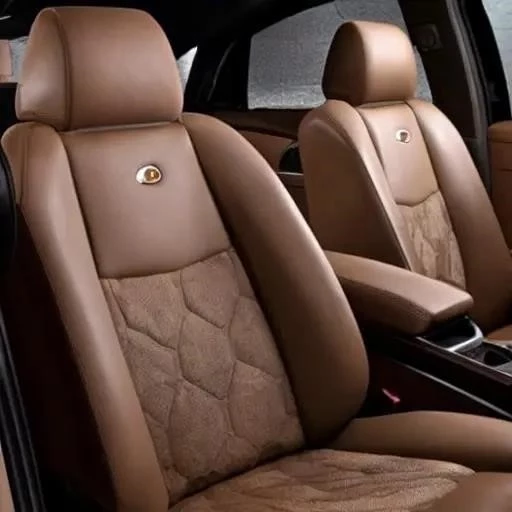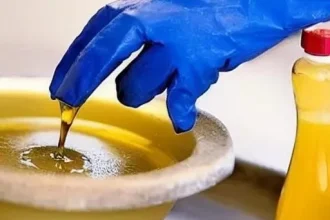Today is 09/22/2025
In the dynamic world of automotive design, where innovation ceaselessly converges with timeless elegance, the interior of a vehicle has transcended mere functionality to become a sanctuary of personal expression. At the heart of this profound transformation, leather material for car interior remains an unparalleled symbol of sophistication, comfort, and enduring quality. Far from being a relic of the past, this exquisite material is currently undergoing a remarkable renaissance, reinventing itself to meet the rigorous demands of a future-focused, environmentally conscious automotive industry.
Today, as consumers increasingly prioritize comfort, aesthetics, and sustainable choices in their new vehicle purchases, genuine leather continues to prove its formidable worth. Its inherent qualities – from the unmistakable tactile softness to its proven durability – position it as a remarkably effective solution that satisfies both practical necessities and profound environmental aspirations. This isn’t just about maintaining status; it’s about pioneering a new era where opulent comfort and ecological responsibility are not mutually exclusive, but rather intrinsically linked, shaping the very essence of future mobility with unprecedented foresight.
| Aspect | Key Information & Strategic Insights |
|---|---|
| Global Market Growth (Automotive Interior Leather) | Projected to expand robustly from USD 24.3 billion in 2025 to an estimated USD 39.2 billion by 2035, demonstrating an impressive Compound Annual Growth Rate (CAGR) of 4.9%. This underscores sustained demand and investment in premium materials. |
| Overall Automotive Interior Materials Market | Anticipated to reach USD 54.8 billion by 2026, growing from USD 48.1 billion in 2021. This growth is predominantly driven by increasing consumer expectations for enhanced passenger comfort, superior durability, captivating aesthetics, and advanced safety features within vehicle cabins. |
| Predominant Genuine Leather Types Used | Primarily chrome-tanned cowhides featuring a pigmented finish (corrected grain) for durability and affordability. High-end vehicles frequently utilize full-grain, Nappa, semi-aniline, calfskin, or lambskin to deliver a more premium, softer tactile experience. |
| Key Advantages of Genuine Leather | Offers unparalleled elegance, superior aesthetics, enhanced vehicle value, luxurious softness, and remarkable durability. Modern treatments also imbue it with easy-clean, anti-humidity, anti-scratch, and anti-UV properties, extending its lifespan and maintaining its pristine appearance. |
| Emerging Alternatives & Innovations | The market is embracing advanced synthetic leather (PVC, PU), high-performance Alcantara, and increasingly, Bio-Based Custom Automotive Leather, which promises environmental friendliness, sustainability, and exceptional performance. Hyundai’s exploration of grain-based leather alternatives signals a dynamic shift towards innovative, eco-conscious materials. |
| Driving Factors for Synthetic Materials | Cost-effectiveness (particularly for PVC artificial leather), superior durability, extensive design flexibility, often perceived environmental benefits, and continuous advancements in manufacturing technologies are propelling the growth and adoption of synthetic options. |
| Industry Reference & Innovation | GAHH Automotive ⸺ Raw Leather Materials: A leading provider of high-quality raw leather, including vintage OEM production and luxury brands, exemplifying the industry’s commitment to diverse material solutions. |
The Enduring Allure of Genuine Leather: A Legacy Reimagined
For decades, genuine leather has reigned supreme in automotive interiors, embodying a legacy of unparalleled craftsmanship and sensory delight. Think of its exquisite softness, the rich aroma that permeates a new luxury vehicle, and the tactile pleasure of a perfectly contoured seat. As ES MaMirovna aptly observed in 2021, “The leather is the most expensive car seat material, but of course, it offers elegance, aesthetics, and value.” This premium feel is meticulously crafted from various hides, predominantly durable and affordable cowhide leather, though discerning automakers frequently elevate the experience further with supple calfskin or lambskin for an even more luxurious touch, catering to the most refined tastes.
Crafting Perfection: From Hide to High-End Finish
The journey from raw material to a finished, elegant interior is a testament to sophisticated processing and meticulous quality control. After tanning, leather is rigorously graded based on its natural characteristics and any minor imperfections. The finest quality, boasting minimal flaws, is typically reserved for aniline or nubuck finishes, celebrated for their natural appearance and incredibly soft, breathable feel. Semi-aniline follows, offering a desirable balance of natural beauty and enhanced durability, while corrected grain or embossed leathers provide robust, versatile options for broader application. Companies like GAHH Automotive exemplify this dedication, offering an extensive selection of raw leather materials, from vintage OEM production leather to high-end stock from prestigious manufacturers including Lamborghini, Ferrari, Maserati, Audi, and BMW, ensuring immediate availability for custom projects and restoration efforts alike.
The Sustainability Imperative and Bio-Innovation: Driving a Greener Future
As the world collectively drives towards a more environmentally conscious future, the narrative around leather is evolving dramatically. Real leather, inherently a natural material, is increasingly positioned not just as a luxury, but as a sustainable choice when responsibly sourced and processed. Crucially, the advent of Bio-Based Custom Automotive Leather represents a significant leap forward, offering an innovative material with broad market prospects due to its inherent environmental friendliness, sustainability, and exceptional performance. This pioneering approach integrates insights from advanced material science, promising to redefine eco-luxury in vehicle cabins without compromising on the coveted premium feel that discerning consumers expect from their automotive investments.
The Ascendancy of Advanced Synthetics and Performance Alternatives
Yet, the automotive interior landscape is also being dynamically shaped by advanced synthetic materials, presenting compelling alternatives to traditional leather. Explore the extensive use of synthetic leather in the industry, highlighting its distinct advantages in cost-effectiveness, remarkable durability, reduced environmental footprint (in certain manufacturing contexts), and unparalleled design flexibility. Materials like Alcantara, a synthetic marvel, have become incredibly popular, perfect for finishing ceilings, racks, and various interior trims, offering a unique blend of softness, grip, and luxurious aesthetics. The cost-effective nature of PVC artificial leather, combined with relentless advancements in manufacturing technology, are undeniably two primary drivers fueling the robust growth of the global automotive PVC artificial leather market, creating a competitive yet innovative ecosystem where choice abounds.
Market Dynamics and Future Trajectories: A Thriving Ecosystem
The global automotive interior leather market is not merely growing; it is on a trajectory of robust expansion, projected to soar from a substantial USD 24.3 billion in 2025 to an astounding USD 39.2 billion by 2035, representing an impressive Compound Annual Growth Rate (CAGR) of 4.9%. This optimistic outlook is further underscored by the broader Automotive Interior Materials Market, which is set to reach USD 54.8 billion by 2026, driven by an insatiable consumer demand for enhanced passenger comfort, superior durability, captivating aesthetics, and advanced safety features. Industry giants like Yanfeng confidently anticipate no shortage of quality leather sourcing, even as increasing demand prompts a crucial debate regarding future sector needs and sustainable supply chains. Investor inquiries, particularly concerning companies like Hongxing Automotive Leather and their performance in popular new models, reflect a vibrant and forward-looking market poised for sustained innovation.
Customization, Technology, and the Modern Vehicle: Tailored Experiences
Beyond standard offerings, the industry is witnessing an unprecedented surge in custom, one-of-a-kind leather interiors, allowing vehicle owners to personalize their space with remarkable precision and flair. Expert teams specialize in creating bespoke designs, utilizing a range of materials, including premium aftermarket auto leather available at true wholesale prices, catering to unique aesthetic preferences and individual driving styles; Modern automotive leather is specifically engineered for high performance, undergoing specialized treatments to enhance water resistance, thickness, softness, and crucial properties like water absorption, desorption, and vapor permeability. It is anti-humidity, anti-scratch, and anti-UV treated, ensuring longevity and maintaining its pristine appearance even in the most demanding environments, solidifying its place as a truly high-quality, high-performance material for contemporary vehicle interiors.
The Road Ahead: Luxury, Innovation, and Sustainability Converge
Ultimately, the journey of leather material for car interior is far from over; it is accelerating towards an incredibly exciting future. By seamlessly blending enduring luxury with groundbreaking sustainability, and by integrating insights from cutting-edge material science with meticulous craftsmanship, the automotive industry is redefining what’s possible within the confines of a vehicle cabin. Whether it’s the rich, authentic embrace of genuine leather, the innovative promise of bio-based alternatives, or the versatile performance of advanced synthetics, the road ahead for automotive interiors is paved with unparalleled comfort, breathtaking aesthetics, and an unwavering commitment to a more sustainable, luxurious driving experience for all.






